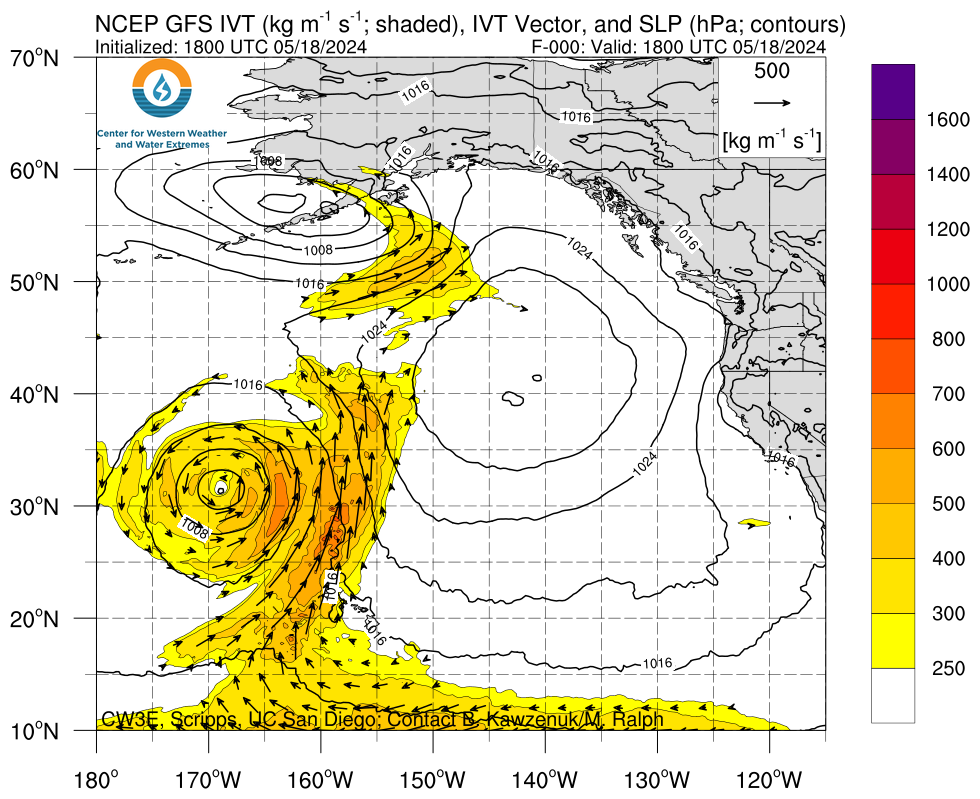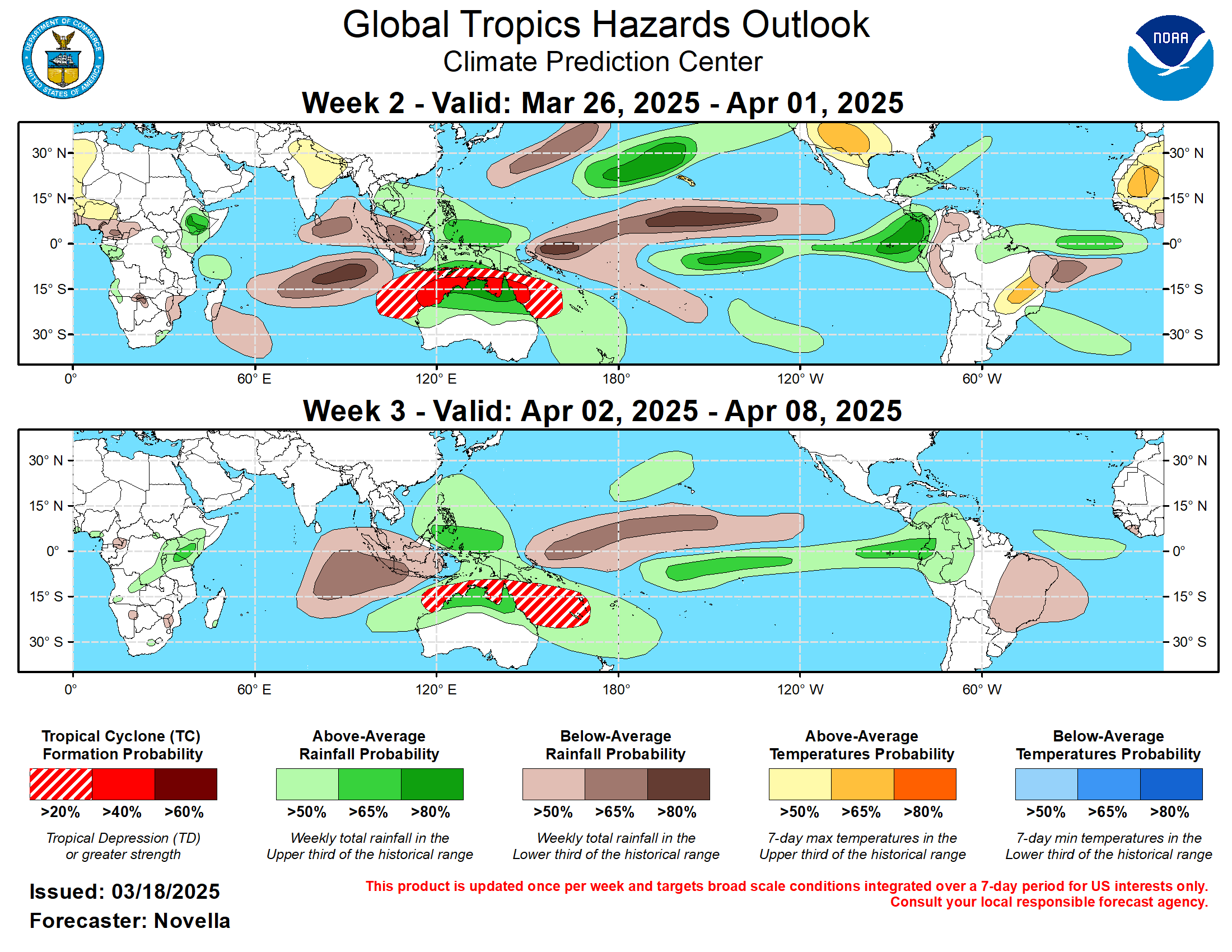This article focuses on what we are paying attention to in the next 48 to 72 hours. The article also includes weather maps for longer-term U.S. outlooks and a six-day World weather outlook which can be very useful for travelers.
First the NWS Short Range Forecast. The afternoon NWS text update can be found here after about 4 p.m. New York time but it is unlikely to have changed very much from the morning update. The images in this article automatically update.
Short Range Forecast Discussion
NWS Weather Prediction Center College Park MD
Wed May 29 2024
Valid 12Z Wed May 29 2024 – 12Z Fri May 31 2024…Active central U.S. weather pattern to continue, with heavy rains,
flash flooding, and severe weather possible……Anomalous heat continues across far southern Texas and Florida, while
hot temperatures begin to build in the Southwest and interior California
Valleys…The active and stormy weather pattern impacting the central U.S. is set to
continue over the next few days while also expanding in coverage to
include much of the Great Plains, middle and lower Mississippi Valley. For
today, a cold front progressing across the Northern Rockies and central
Great Basin in response to a Northwest upper trough will help spark
numerous thunderstorms into the northern Plains and parts of the central
High Plains. A few scattered storms could contain intense rainfall rates,
hail, and damaging winds. Scattered thunderstorms are also possible along
a lingering stationary front extending along the Gulf Coast and southern
Plains, which have greater chances of producing instances of flash
flooding due to thunderstorms overlapping with saturated ground
conditions. As upper troughing enters the Great Plains on Thursday, even
more rounds of slow-moving tumultuous thunderstorm clusters are
anticipated. This leads to a broad region at risk for hail, damaging
winds, and flash flooding from Kansas and eastern Colorado to
north-central Texas. This activity is then forecast to gradually slide
eastward on Friday to impact the ArkLaTex region, as well as extending
into the mid-Mississippi Valley and southern Plains once again. Flash
flooding will remain a concern due to the relatively slow-moving nature of
thunderstorms occurring within a moisture rich environment. Widespread
areal-averaged rainfall totals by the end of the week are forecast to add
up to over 2 inches throughout much of Kansas, Oklahoma, northern Texas,
southern Arkansas, and northern Louisiana, with localized amounts over 4
inches possible.Simmering heat is expected to continue for much of the central and
southern Florida Peninsula as highs reach into the mid-90s, which may
tied/break daily record highs today. Highs also returning to the upper 90s
are forecast along the Rio Grande Valley of southern Texas after early
morning thunderstorms. However, a larger area of hot weather will begin to
build throughout the Southwest and interior California valleys by the end
of the week. Afternoon temperatures into the upper 90s and triple digits
can be expected.Elsewhere, high pressure stretching from the Great Lakes to the Southeast
will keep most areas east of the Mississippi River dry with the exception
of the Ohio Valley, Mid-Atlantic, and Northeast today. A compact storm
system will be swinging eastward over the Mid-Atlantic and produce
scattered showers and thunderstorms. The main weather hazards associated
with these storms are forecast to be associated with lighting and locally
heavy rain.
To get your local forecast plus active alerts and warnings click HERE and enter your city, state or zip code.
Learn about wave patterns HERE.
Then, looking at the world and of course, the U.S. shows here also. Today we are looking at precipitation.
Please click on “Read More” below to access the full Daily Report issued today.
| Notices: What would you like to learn about? Please provide that to me via the comment section at the end of the article. |
Now more detail on the 48-Hour Forecast (It is a 48 to 72 Hour Forecast actually)
Daily weather maps. The Day 1 map updates twice a day and the Day 2 and 3 maps update only once a day. These maps update automatically. But if that does not happen, you can get updates by clicking HERE
TODAY (or late in the day the evening/overnight map will appear) (Key to surface fronts shown on maps and you will then also be able to insert a city name or zip code and get a local NWS forecast).
TOMORROW
NEXT DAY
We have a new animation of the forecast which shows how things may play out over the next 60 hours. To update click ANIMATION. Doing so will get you to the dashboard. You can then step through the animation or hit LOOP on the upper right of the display. You will have to hit the back arrow ← at the top left on your computer to get back into this article. It is a little more trouble than before but I think NOAA scrapped the animation routine I was using so we have to keep up with “progress”.
The NWS Climate Prediction Center’s: Watches, Warnings, and Advisories plus other information can be found HERE. That takes you to the NWC Severe Weather Site. From there you can select among many categories of information. Remember to hit the back arrow ← at the top left of your screen to return to this article.
ATMOSPHERIC RIVERS
This tells us what is approaching the West Coast. Click HERE to update If I have not gotten around to doing the update. Here is some useful information about Atmospheric Rivers.
Below is the current five-day cumulative forecast of precipitation (Updates can be found HERE)
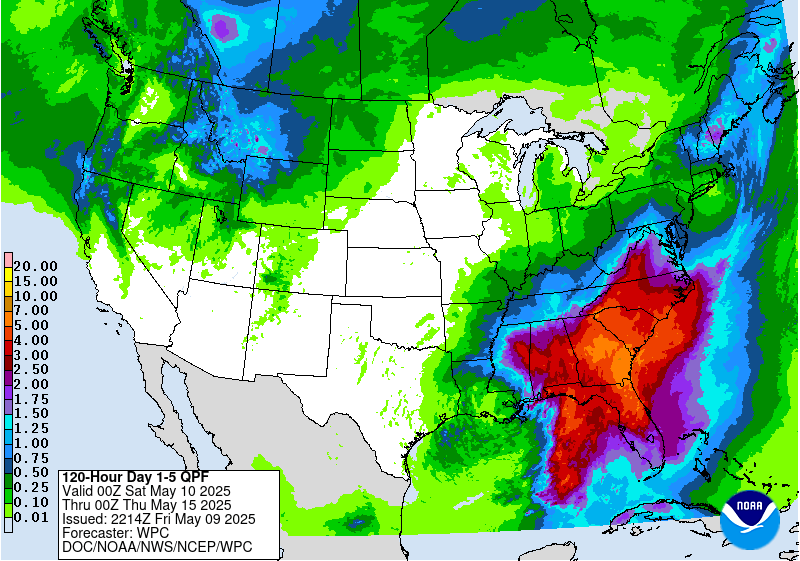
Ski SnowReports will Resume in the Fall.
Now we look at Intermediate-Term “Outlook” maps for three time periods. Days 6 – 10, Days 8 – 14, and Weeks 3 and 4. An outlook differs from a forecast based on how NOAA uses these terms in that an “outlook” presents information as deviation from normal and the likelihood of these deviations.
Below are the links to obtain updates and additional information. They are particularly useful if you happen to be reading this article significantly later than when it was published. I always try to provide readers with the source of the information in my articles. These links may also be useful for those viewing this article on a cell phone or other small screen.
| Days 6 – 10 (shown in Row 1) | Days 8 – 14 (Shown in Row 2) | Weeks 3 and 4 (Shown in Row 3 but updates only on Fridays) |
| https://www.cpc.ncep.noaa. gov/products/predictions/610day/ | https://www.cpc.ncep .noaa.gov/products/predictions/814day/ | https://www.cpc.ncep.noaa.gov/products/predictions/WK34/ |
Showing the actual maps. They should now update automatically. The Week 3 – 4 Outlook only updates on Fridays. So below is what I call the Intermediate-term outlook. On Fridays, it extends out 28 Days. That declines day by day so on Thursday it only looks out 22 days until the next day when the Week 3 – 4 Outlook is updated and this extends the outlook by one additional week.
| 6–
10
|
|
|
| 8–
14 |
|
|
| 3–
4 |
|
|
HAZARDS OUTLOOKS
Click here for the latest complete Day 3 -7 Hazards forecast which updates only on weekdays. Once a week probably Monday or Tuesday I will update the images. I provided the link for readers to get daily updates on weekdays. Use your own judgment to decide if you need to update these images. I update almost all the images Friday Night for the weekend edition of this Weather Report. So normally readers do not need to update these images but if the weather is changing quickly you may want to.
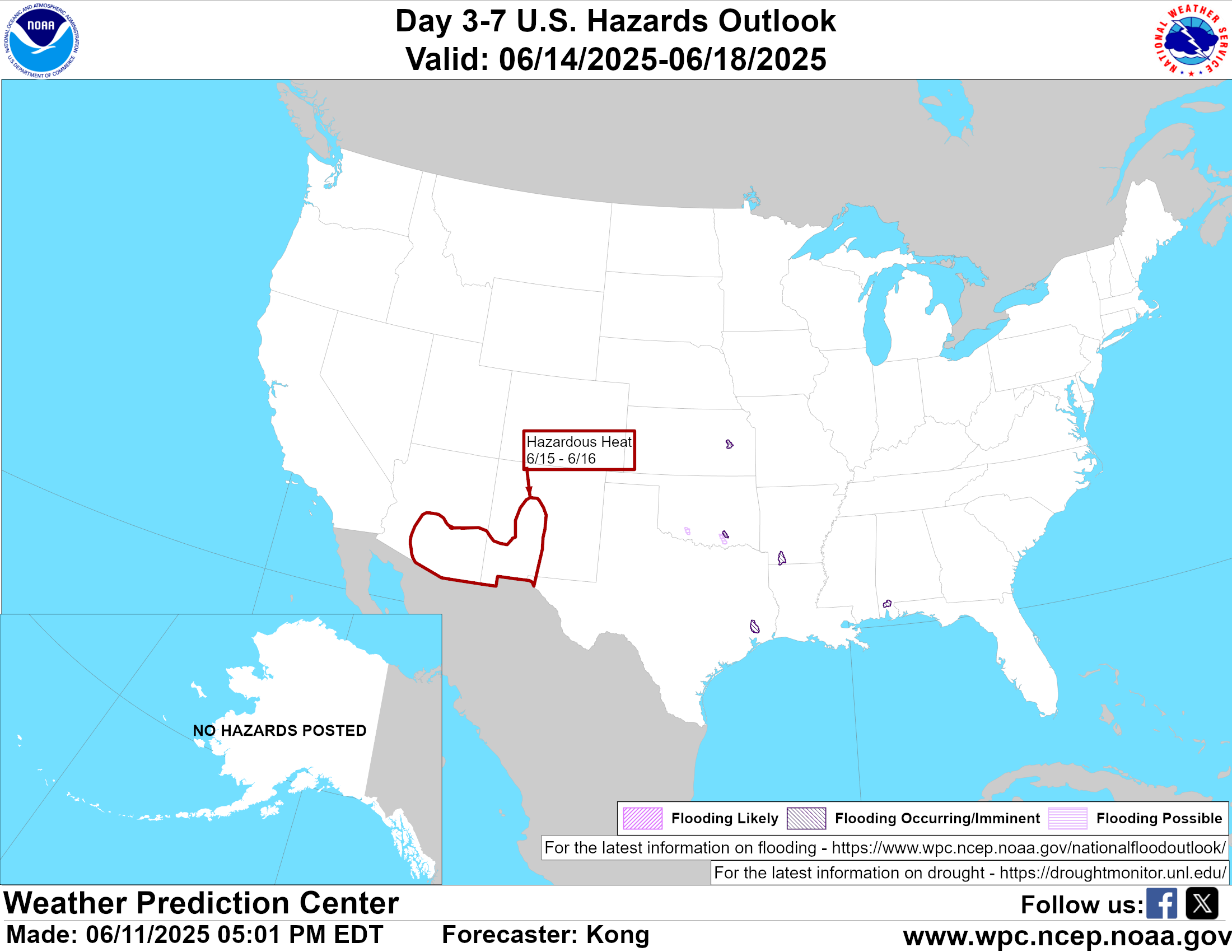
Temperature month to date can be found at https://hprcc.unl.edu/products/maps/acis/MonthTDeptUS.png
Precipitation month to date can be found at https://hprcc.unl.edu/products/maps/acis /MonthPNormUS.png
World Forecast [that website is has been intermittent so be patient]
Below are the Day 1 -3 and 4-6 forecasts for temperature and precipitation. Updates and much additional information can be obtained HERE
World Temperature Anomalies

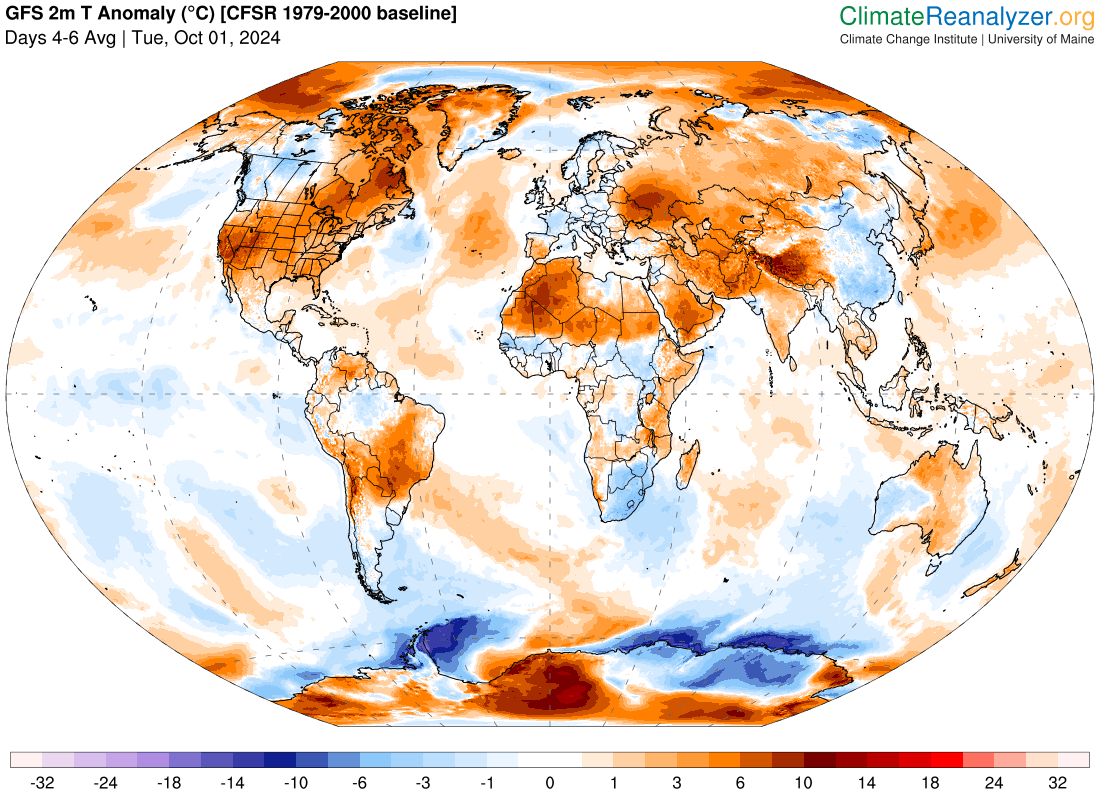
World Accumulated Precipitation
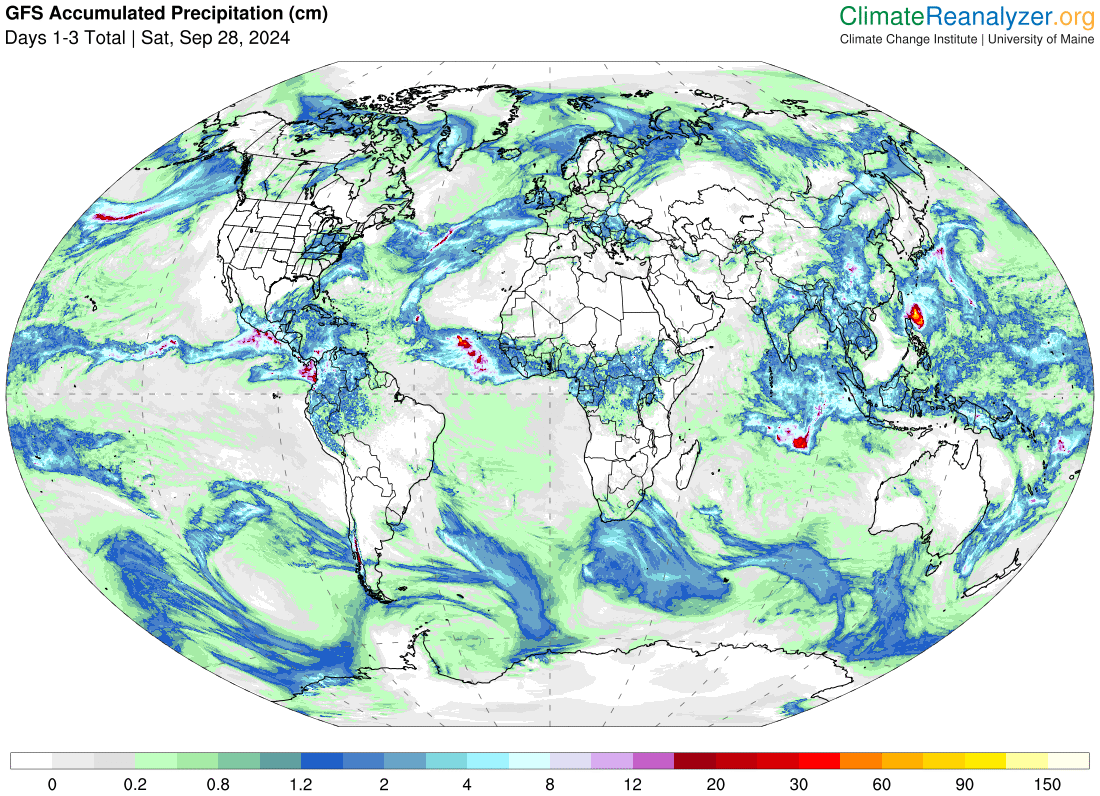

This information is provided by the University of Maine. They draw upon many different sources. There is a lot of information available at the link provided. I have just provided two useful forecasts. There are probably over a hundred different forecasts available from this source.
Worldwide Tropical Forecast (This is a NOAA Product)
This graphic updates on Tuesdays) If it has not been updated, you can get the update by clicking here Readers will only have to do that if they are reading this article much later than the date of it being published.
Information on Tropical Storms can be found HERE. Western Pacific information can be found HERE. Note that unless there is an out-of-season storm the below images will not update until the National Hurricane Center starts their seasonal update of these maps on June 1. I include them simply because there can be an out-of-season event in which case it should show up in these maps.


–
| I hope you found this article interesting and useful. |
–

